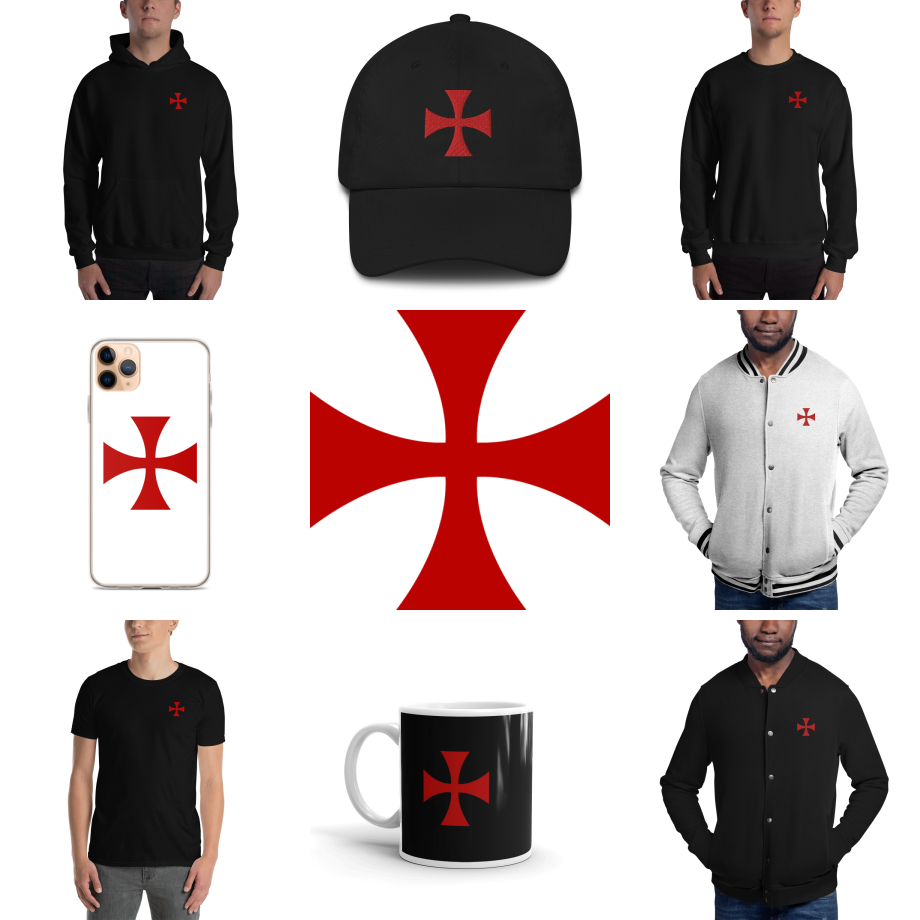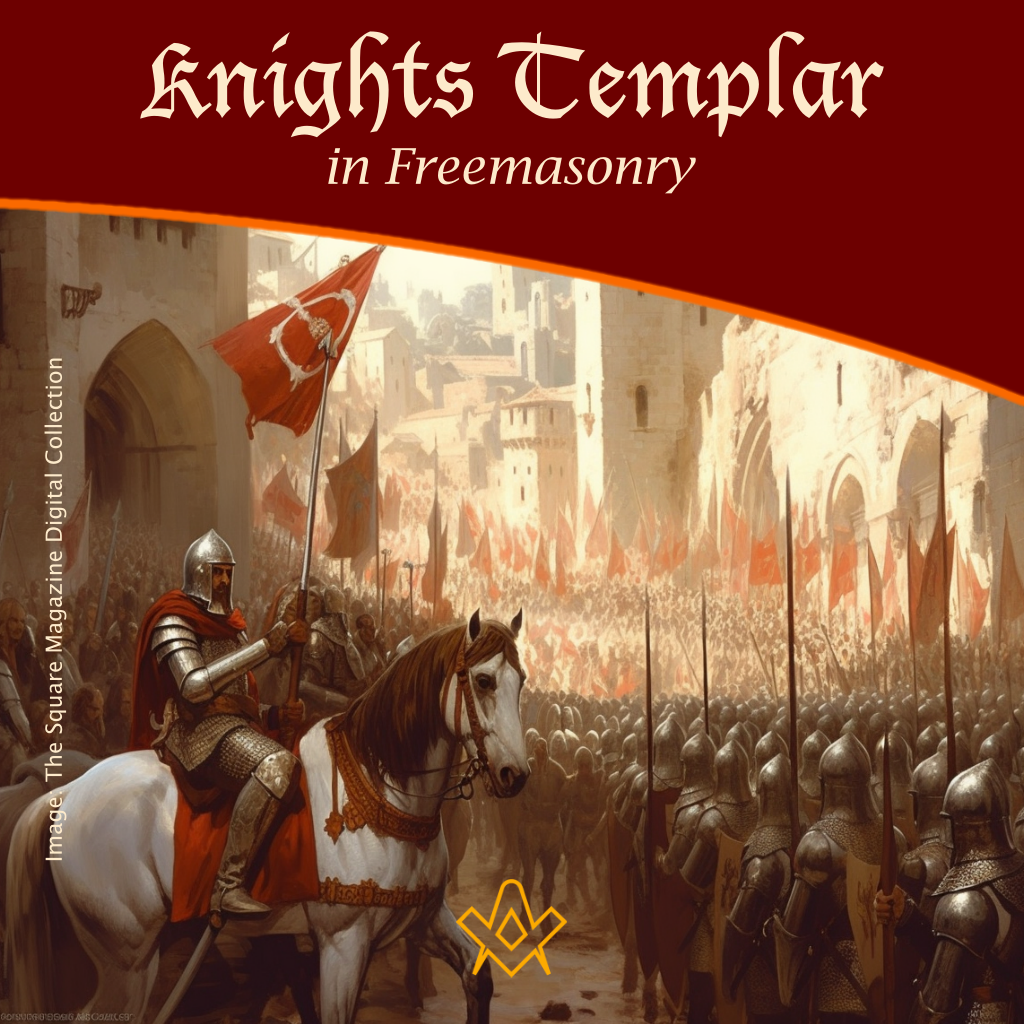Uncover the Mysteries of the Knights Templar in Freemasonry! Delve into the intriguing world where chivalry and symbolism intertwine. Analysing the Connection Between Freemasonry and the Knights Templar
Before delving into the potential links between Freemasonry and the Knights Templar, it is essential to understand the historical context of both organizations.
Freemasonry is a fraternal organization with roots dating back to the late 16th and early 17th centuries. Its origins are primarily tied to operative stonemasons’ guilds, which evolved into a more symbolic and philosophical organization over time.
The Knights Templar, on the other hand, was a medieval Christian military order established in the early 12th century.
They were initially formed to protect Christian pilgrims traveling to the Holy Land, but later took on a more significant role in the Crusades. The order was widely known for its military prowess and strategic expertise.
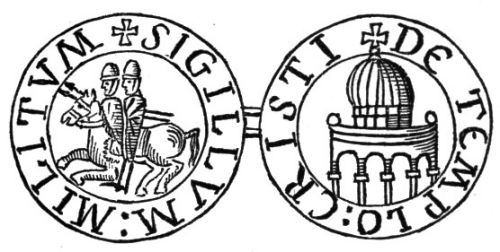
Knights Templar Degree: An 18th-century Development
It wasn’t until the 18th century that the first links between Freemasonry and the Knights Templar began to emerge.
The Knights Templar degree, a new Masonic degree incorporating elements of the legendary military order, was introduced at this time.
This degree borrowed themes of chivalry and medieval symbolism from the romanticized image of the Knights Templar, accentuating their history and tactical skills during the Crusades.
Scottish Freemasonry: Building on Templar Themes
In the early 19th century, Scottish Freemasonry further developed the connection between the two organizations by incorporating additional degrees related to the Templars, such as the “Order of the Temple.”
These degrees expanded on the Templar themes and constructed a narrative linking Freemasonry with the medieval military order.
However, it is crucial to remember that these degrees are primarily symbolic and ritualistic, not indicative of a direct historical lineage between Freemasonry and the Knights Templar.
Expanded Analysis: Masonic Orders Related to the Knights Templar
As mentioned earlier, there are several Masonic degrees and orders inspired by the Knights Templar. Here, we’ll explore some important Masonic factions that connect to the Templar’s history, symbolism, and mythology.
York Rite: A Path within Freemasonry
The York Rite is a collection of separate Masonic bodies and associated degrees that trace their origins to medieval operative stonemason guilds of York, England.
The York Rite consists of three primary bodies: the Royal Arch Chapter, the Cryptic Council, and the Knights Templar Commandery. Each body is designed to confer and preserve specific Masonic degrees.
Knights Templar Commandery
The Knights Templar Commandery, the final body within the York Rite, focuses specifically on the chivalric and Christian aspects of Freemasonry. This body confers three degrees:
1. Order of the Red Cross
2. Order of the Knights of Malta
3. Order of the TempleThe Order of the Temple, arguably the most recognizable of the three, is a direct link to the Knights Templar’s legacy.
Aspirants of this degree undergo a highly symbolic initiation ceremony that follows the journey of a Christian knight.
The rituals and teachings within this degree emphasize bravery, piety, humility, and self-discipline, drawing clear parallels to the Knights Templar’s values.
Scottish Rite: A Parallel System of Degrees
The Scottish Rite is another system within Freemasonry comprising 32/33 degrees, each building upon the lessons of the previous degree.
Within the Scottish Rite, a particular interest is placed on historical and philosophical teachings. While not as directly linked to the Knights Templar as the York Rite Commandery, Scottish Rite degrees do contain thematic connections to medieval knighthood and chivalric orders.
Rose Croix: A Lesson from the Past
The 18th degree of the Scottish Rite, the Rose Croix, is of particular interest regarding the Knights Templar due to its focus on Christian symbolism and connections to medieval knighthood.
The degree’s rituals emphasize themes of resurrection, hope, and renewal, but also include symbolism and lessons related to the ideals of the original Knights Templar.
Rectified Scottish Rite: A Rite Rooted in Templar Mythology
The Rectified Scottish Rite, also known as the Rite of Strict Observance, is a European Christian Masonic Rite that, while less well-known than the York or Scottish Rite, has a unique perspective on templarism.
This rite, devised by the Baron von Hund in the 18th century, operated under the claim that its origins could be traced back to the historical Knights Templar.
Hund’s Rite of Strict Observance incorporated several degrees focused on the Knights Templar history, including rituals and teachings that considered the order’s persecution and eventual dissolution.
However, historical evidence supporting a direct lineage between the Rite of Strict Observance and the original Knights Templar remains speculative and unsubstantiated.
The Rectified Scottish Rite, also known as Order of Knights Beneficent of the Holy City or Knights Benefactor of the Holy City (French: Chevalier bienfaisant de la Cité sainte) is a Christian Masonic rite founded in Lyon (France) in 1778.
Understanding the Role of the Templar-themed Orders
In summary, several Masonic orders, such as the York Rite Commandery, the Scottish Rite, and the Rectified Scottish Rite, connect Freemasonry to the Knights Templar ethos.
These orders employ rich symbolism and rituals inspired by the Templars’ legacy, but it is essential to remember that their primary goal is to convey moral lessons and spiritual teachings to Masonic aspirants.
While a direct, historical connection between these Masonic orders and the original Knights Templar remains speculative, the undeniable shared themes, myths, and values across these organizations continue to be of significant interest to both Masonic scholars and enthusiasts.
Modern Perceptions and Conspiracy Theories: Exploring the Popularization of the Connection
The Holy Blood and the Holy Grail: A Catalyst for Speculation
The 20th century saw an increased fascination with the alleged connection between Freemasonry and the Knights Templar, largely due to the publication of “The Holy Blood and the Holy Grail” by Michael Baigent, Richard Leigh, and Henry Lincoln.
This book presented a series of elaborate conspiracy theories and fictional narratives, implying a mysterious continuation of the Templars within Freemasonry.
While the authors’ claims were not supported by credible historical evidence, the book sparked widespread interest in the potential connections between the two organizations and their symbolism.
Holy Blood, Holy Grail: The Secret History of Christ & The Shocking Legacy of the Grail – Buy on Amazon
The Da Vinci Code: A Fictional Narrative Reinforcing the Connection
Dan Brown’s bestselling novel “The Da Vinci Code” further popularized the idea of a link between Freemasonry and the Knights Templar. Similar to “The Holy Blood and the Holy Grail,” Brown’s work of fiction offered a captivating storyline based on conspiracy theories and secret societies and depicted a hidden history of the Templars within Freemasonry.
Although this bestseller propelled global discussions on the potential connection, it is vital to emphasize that Brown’s work is purely fictional, and credible historical evidence supporting these claims is scarce.
The Da Vinci Code – Buy on Amazon
Analyzing the Symbolism: Key Elements Connecting Freemasonry and the Knights Templar
While historical proof of a direct connection between the two organizations is limited, certain shared symbolism and rituals link Freemasonry with the Knights Templar. The following are key features connecting both groups:
Chivalric and Religious Themes
Both Freemasonry and the Knights Templar organizations carry a strong emphasis on chivalry, religious faith, and brotherhood. The Knights Templar were renowned for their fierce commitment to the protection of Christian pilgrims and principles, whereas Freemasonry encompasses various masonic degrees (such as the Knights Templar degree) relating to religious and chivalric values.
Shared Symbols
Various symbols are associated with both the Knights Templar and Freemasonry, such as the square and compasses, the cross, and other geometric shapes. Although the meanings behind these symbols may differ, they serve to connect the organizations at a symbolic level.
Rituals and Ceremonies
Freemasonry is well known for its elaborate rituals and ceremonies, many of which also feature in the Templar-related degrees. These rituals include intricate costumes, regalia, and specific rites or tokens, creating an atmospheric link between the two organizations.
Dispelling Myths and Assessing the Connection
While Freemasonry and the Knights Templar share many symbolic and thematic connections, it is crucial to differentiate between these links and the claims made in popular conspiracy theories.
The Templar Masonic Orders are an essential part of the Masonic tradition, drawing inspiration from the Templar history and symbolism to teach moral and philosophical lessons.
The fascination surrounding the connection between Freemasonry and the Knights Templar reflects a cultural preoccupation with secret societies, mystical connections, and hidden history.
However, these supposed connections must be considered with a critical and analytical perspective, carefully distinguishing between historical facts and sensationalized speculation.
In summary, the connection between Freemasonry and the Knights Templar primarily exists in the realm of symbolism and ritual, rather than any factual, historical lineage.
The Knights Templar, Medieval Crusades
The Crusades were a series of military campaigns initiated by Christian Europe in response to the expansion of Islam in the Middle East. The Knights Templar, a medieval Christian military order, played a prominent role in several of these Crusades. Here is a list of the major Crusades involving the Knights Templar, arranged in chronological order:
First Crusade (1096-1099): The First Crusade was launched in response to the appeal by Byzantine Emperor Alexios I Komnenos for aid against the Seljuk Turks. The Knights Templar participated in the siege of Nicaea, the Battle of Dorylaeum, the siege of Antioch, and the capture of Jerusalem.
Second Crusade (1147-1149): The Second Crusade aimed to recapture the city of Edessa, which had fallen to the Muslims. While the Knights Templar were involved in the campaign, their role was relatively minor compared to other Crusader forces.
Third Crusade (1189-1192): The Third Crusade was prompted by the Muslim recapture of Jerusalem in 1187. The Knights Templar, along with other Crusader orders, participated in the campaign led by notable figures such as Richard the Lionheart of England, Philip II of France, and Frederick I, Holy Roman Emperor.
Fourth Crusade (1202-1204): The Fourth Crusade, initially intended to recapture Jerusalem, took an unexpected turn when the Crusaders ended up sacking the Christian city of Constantinople. The Knights Templar played a significant role in the campaign, but their involvement in the events leading to the fall of Constantinople remains controversial.
Fifth Crusade (1217-1221): The Fifth Crusade aimed to capture Egypt as a means to weaken Muslim power in the region. The Knights Templar participated in the siege of Damietta, but the Crusade ultimately ended in failure.
Sixth Crusade (1228-1229): The Sixth Crusade was unique in that it involved diplomacy rather than outright military confrontation. Holy Roman Emperor Frederick II negotiated a peace treaty with the Sultan of Egypt, allowing Christians to regain control of Jerusalem without a battle. The Knights Templar participated in this campaign, which is often referred to as the “Crusade of Frederick II.”
Seventh Crusade (1248-1254): The Seventh Crusade, led by King Louis IX of France, aimed to capture Egypt. The Knights Templar actively participated in the campaign, but it ultimately ended in defeat and Louis IX’s capture at the Battle of Al Mansurah.
The Knights Templar, as a military order, were involved in various military actions and conflicts during their existence.
Expansion and Defensive Operations:
After the establishment of the Knights Templar in 1119, the order quickly gained prominence and support. They established a network of fortified castles and commanderies throughout the Crusader states, including in the Kingdom of Jerusalem, County of Tripoli, and the Principality of Antioch.
The Templars engaged in defensive operations against Muslim forces, protecting Christian pilgrims and the territories held by the Crusader states. They often participated in skirmishes, raids, and sieges against Muslim armies.
Battle of Montgisard (1177):
The Battle of Montgisard was a significant engagement during the Crusader period. A combined force of Knights Templar, Hospitallers, and other Crusaders, led by Baldwin IV of Jerusalem, successfully defeated a much larger Ayyubid army led by Saladin.
Reconquista in Iberia:
The Templars played a role in the Christian Reconquista in the Iberian Peninsula, where they fought against Muslim forces alongside other Christian kingdoms. They participated in various battles and sieges, including the famous Siege of Almeida in 1170.
Baltic Crusades:
The Knights Templar participated in the Baltic Crusades, a series of campaigns against the pagan tribes in the Baltic region during the 12th and 13th centuries. They joined forces with other Christian military orders and kingdoms to conquer and Christianize the lands of present-day Estonia, Latvia, and Lithuania.
Conflict with the Assassins:
The Templars clashed with the Hashashin (Assassins), a secretive Islamic sect. These conflicts primarily took place in the Levant and included battles, sieges, and assassinations. One notable event was the Siege of al-Kahf in 1163, where the Templars successfully defended their fortress against the Assassins.
Internal Struggles and Political Challenges:
The Knights Templar faced internal conflicts and external challenges. They sometimes clashed with other Christian factions, such as the Hospitallers, over power and influence.
In the early 14th century, the Templars faced increasing scrutiny and persecution by the French monarchy and the Catholic Church.
Accusations of heresy and other charges led to the suppression of the order in 1312.
The Knights Templar played significant roles in finance, trade, diplomacy, and infrastructure development during the Crusader period.
Here is an outline of their contributions in these areas:
Knights Templar and Finance:
The Templars established a sophisticated financial network across Europe and the Middle East. They developed a system of banking that allowed pilgrims and Crusaders to deposit their wealth in one location and withdraw it in another, reducing the risks associated with long-distance travel.
The Templars issued letters of credit, acting as early bankers, which facilitated secure and efficient financial transactions.
They provided loans to monarchs, nobles, and other individuals, gaining substantial wealth and influence in the process.
Trade:
The Templars engaged in international trade, transporting goods and commodities across different regions. They had their own fleets of ships, which allowed them to participate in maritime trade and establish trading posts in key ports.
The Templars facilitated trade between the Crusader states and Europe, helping to supply goods and resources to the Holy Land.
They also imported valuable goods, such as spices, textiles, and luxury items, which contributed to economic prosperity in the Crusader states.
Knights Templar and Diplomacy
The Knights Templar had strong diplomatic ties with various Christian and Muslim powers. They negotiated treaties, alliances, and truces on behalf of the Crusader states, working to secure political stability and peaceful coexistence.
Templar knights often acted as intermediaries between different factions, assisting in diplomatic efforts and resolving conflicts through negotiation and diplomacy.
Knights Templar and Infrastructure Development
The Templars were skilled builders and engineers, involved in the construction of fortifications, castles, and military installations.
They played a crucial role in fortifying key positions, creating a defensive network, and strengthening the Crusader states’ infrastructure.
They developed their own architectural style, incorporating elements of both Western and Eastern influences.
Notable examples of Templar architecture include their headquarters in Jerusalem, known as the Temple Mount, and the famous fortress of Krak des Chevaliers in present-day Syria.
Knights Templar and Agricultural and Economic Development:
The Templars invested in agriculture, establishing farms, vineyards, and other agricultural enterprises. They introduced new farming techniques and technologies, improving productivity and contributing to economic growth in the Crusader states.
Through their extensive landholdings and economic activities, the Templars became major landowners and contributed to the development of feudal systems in the regions where they operated.
Overall, the Knights Templar’s involvement in finance, trade, diplomacy, and infrastructure development helped shape the economic, political, and social landscape of the Crusader states, making them a significant force beyond their military contributions.
The Chinon Parchment & what it has to do with the Knights Templar:
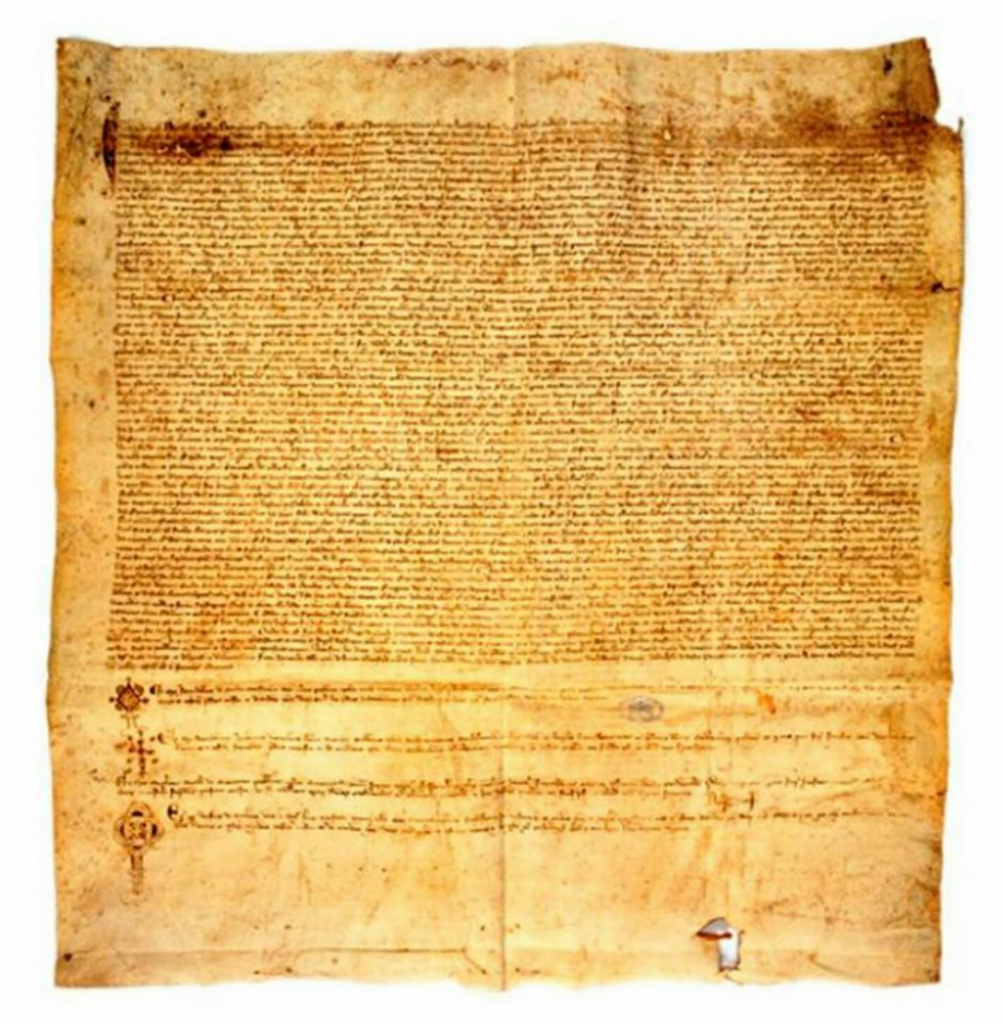
In September 2001, Barbara Frale, an Italian paleographer at the Vatican Secret Archives, made an intriguing historical discovery known as the Chinon Parchment. This significant document sheds light on events dating back to 1308 when Pope Clement V took action to absolve Jacques de Molay, the last Grand Master of the Knights Templar, along with the rest of the Templar leadership, from charges brought against them during the Medieval Inquisition.
The Chinon Parchment is specifically dated August 17-20, 1308, and originates from Chinon, France. It was authored by three Cardinals: Bérenger Fredoli, Etienne de Suisy, and Landolfo Brancacci, who held positions in Saints Nereus and Achileus, St. Cyriac in Thermis, and Sant’Angelo in Pescheria, respectively.
An authentic copy of the Chinon Parchment is maintained by the Vatican, referenced as Archivum Arcis Armarium D 218, with the original being labeled as D 217 (another version of the Chinon Parchment was published by Étienne Baluze in 1693). This historically significant document offers valuable insights into the absolution of the Templar leadership during a crucial period in medieval history.
It has long been assumed that the document in question exists. In the bull Faciens misericordiam, issued in August of 1308, Clement V stated that the leaders of the Templars were intended to be brought to Poitiers for questioning by the Pope himself. However, due to some of them being too unwell to travel, three cardinals were dispatched to Chinon to conduct the necessary inquiries on behalf of the Pope.
These appointed envoys were tasked with creating an official record of their investigations. According to the bull, they returned with written confessions and testimonies of the aforementioned Master and Commanders, documented as a legal record by notarial attestation, which they presented to the Pope.
Moreover, a letter exists, allegedly written by the three cardinals to King Philip IV, informing him of the absolution granted to the high-ranking officers of the Knights Templar. This letter was published by Étienne Baluze. The contents of the Chinon Parchment find additional support in the records found in register Avignonese 48 of the Vatican Secret Archives, as published in Processus Contra Templarios.
Article by: Margaret S.

Margaret S. is a retired lecturer and devotes much of her time to theological and philosophical writing.
She was made a Freemason in the International Order of Freemasonry for Men and Women - Le Droit Humain.
(Margaret S. is her pen name for all her masonic papers)
Recent Articles: masonic history
 Protestantism and Masonic Influence in Brazil Discover the untold story of how Freemasons helped Southern Americans immigrate to Brazil post-Civil War, fostering economic and educational growth in Santa Bárbara d’Oeste and Americana. Learn about their pivotal role in establishing Protestant churches and ensuring the secularity of the Brazilian State amidst a Catholic-dominated society. |
 Explore the proper use of the sacred word in Brazilian Freemasonry through an analysis of Masonic literature and Bible translations. Uncover the errors in pronunciation and the need for corrections to maintain liturgical coherence in rituals. Discover insights on Masonry, rituals, and the Hebrew word Boaz. |
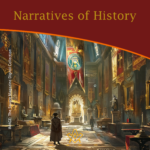 Narratives of History |
 A Very Royal Sesquicentenary |
 Unveiling the Enigma: Discover the Royal Society's Legacy and its Impact on Science. Delve into the fascinating history of the Royal Society, the prestigious UK academy shaping scientific progress since 1660. Explore its pivotal role in advancing knowledge, fostering collaboration, and unlocking the secrets of the universe. Prepare to be amazed! |
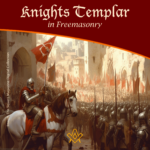 Knights Templar in Freemasonry Uncover the Mysteries of the Knights Templar in Freemasonry! Delve into the intriguing world where chivalry and symbolism intertwine. Discover the captivating rituals and ancient secrets behind the Knights Templar Masonic Orders. Explore the historical connection and delve into the enigmatic narratives that continue to fascinate enthusiasts today. Unveil the hidden truths now! |
 The Royal Arch stands as the rainbow of promise in the Ritual; it stands as the promise of the resurrection; of that which was lost and that it shall be recovered. The question arises as to whether the Master's Word was originally communicated in the Third Degree? On this point there is some diversity of opinion. Originally published in 1915, this insight into the Fourth Degree – the Holy Royal Arch – is as relevant today as it was over 100 years ago. |
 Unveiling the Mysteries of Druidism: Discover the Intriguing Connection with Freemasonry. Explore the ancient spiritual practice of Druidism and its fascinating ties to the enigmatic world of Freemasonry. Delve into the shared symbolism and rituals that have captivated minds for centuries. Unlock the secrets of these intertwined traditions today! |
 Uncover the legacy of freestone masons and their pivotal role in crafting medieval cathedrals. Discover the artistry behind their techniques, the hierarchy within their craft, and the enduring impact of their intricate carvings. A deep dive into the world of these master craftsmen awaits you! |
 Unearth the intriguing journey from Vincha Culture to Freemasonry. Discover how ancient building methods intertwine with modern Masonic philosophies. This exploration will shed light on the fascinating link between the Serbian term "shestarenye" and the symbolic significance of the compass in Freemasonry. |
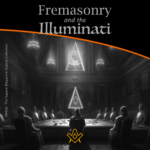 Freemasonry and the Illuminati Unravel the enigmatic world of Freemasonry and the Illuminati in our latest exposé. Dive into centuries-old mysteries, debunk conspiracy theories, and discover the truth behind these elusive societies. Are they puppet masters or mere myths? Join us as we dissect history and fact from fiction. |
 The Île des Templiers, or “Island of the Templars” lies within a leafy park in Paris. The execution site of Jacques du Molay, the last Grand Master of the Knights’ Templar bears a plaque with the epitaph ‘A cet endroit / Jacques de Molay / Dernier grand maître / de l'ordre du temple / a été brûlé le 18 Mars 1314’ (‘In this location / Jacques de Molay / Last grand master / of the order of the temple / was burned on 18 March 1314’) |
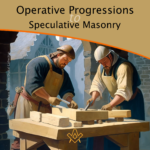 Operative Progressions to Speculative Masonry Both Operative and Speculative Masonry are an important part of the modern fraternity of Freemasonry, which combines elements of both traditions. Today, Freemasonry is a fraternity that is open to men of good character, who are interested in personal development and in making a positive contribution to their communities. |
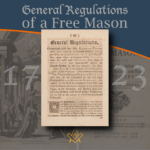 General Regulations of a Free Mason, 1723 General Regulations of a Free Mason as contained in Anderson's Constitutions of the Freemasons, published 1723. the Regulations are of great historical interest. Compiled by George Payne, the second Grand Master of the Premier Grand Lodge of England, they were printed in 1722/3, thus published just over five years after the formation of the Grand Lodge 1717. |
 The Genesis of the 1723 Book of Constitutions 2023, marks the three hundredth anniversary of the publication of the first printed Book of Constitutions of the Grand Lodge formally established in London two years previously. This is an anniversary whose significance extends beyond freemasonry. A paper by Andrew Prescott |
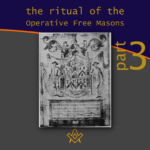 The Ritual of the Operative Free Masons - P3 Existing Operative Free Masons. The ritual I am about to refer, is that of "The Worshipful Society of Free Masons, Rough Masons, Wallers, Slaters, Paviors, Plaisterers, and Bricklayers." By Thomas Carr, M.D., P. M. Honorary Member of the Guild of Operative Free Masons |
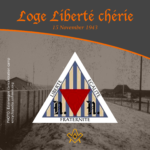 Liberté chérie was a Masonic Lodge founded in 1943 by Belgian Resistance fighters and other political prisoners at Esterwegen concentration camp. It was one of the few lodges of Freemasons founded within a Nazi concentration camp during the Second World War. |
 The Ritual of the Operative Free Masons - P2 If anyone doubts the fact that the formation of Speculative Free Masonry was due to and based upon Operative Free Masonry, it is quite easy to convince him of his error if he will only study the first Book of Constitutions. By Thomas Carr, M.D., P. M. Honorary Member of the Guild of Operative Free Masons |
 In 1881, Freemasonry rose from the ashes of a fire in the mining town of Kokomo, Summit County, Colorado. Corinthian Lodge No. 42, along with Kokomo, no longer exists but it holds the record of having been – at an elevation of 10,618 feet – the highest Masonic Lodge in the USA. |
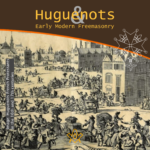 The Huguenots and Early Modern Freemasonry The Huguenots influence in the development of early modern Freemasonry at the time of the formation of the Grand Lodge in London around 1717 / 1723. |
 November is a month of reflection – perhaps due to the fact that we are getting close to the years' end – but also because Remembrance / Armistice Day (11 November) is a significant date in most countries' diaries. |
 Speculative Freemasonry, as practise by Grand Lodge of England, was officially born just over three hundred years ago, is today an international organisation, counting over six million members. It has been subjected to persecution, suppression, and abolition throughout its history. In its infancy, only a couple of decades after its official birth, it had already become a target. |
 The Ritual of the Operative Free Masons - P1 The original paper was written, first, to prove that Speculative Free Masonry was derived from Operative Free Masonry; second, to give some account of the Operative Free Masons, of their Ritual, and of their customs. By Thomas Carr, M.D., P. M. Honorary Member of the Guild of Operative Free Masons |
 American Fraternalism in the 19th and Early 20th Centuries The late 19th and early 20th centuries in the United States has been called the "Golden Age of Fraternalism." How did this come about and why was the idea of joining a fraternal organization so popular? We will explore this question and examine the regalia used by many fraternal organizations in this period. |
 Societas Draconistarum, meaning "Society of the Dragonists"– was a chivalric Order for selected nobility, founded in 1408 by Sigismund von Luxembourg, who through marriage became the King of Hungary (1387–1437) and later Holy Roman Emperor. The Order was fashioned after the military orders of the Crusades, requiring its initiates to defend the cross and fight the enemies of Christianity, in particular the Ottoman Empire. |
 The Perjured Free Mason Detected Was Samuel Prichard a perjured individual, or simply a misguided Freemason? Prichard's book "Free Masonry Dissected" published in 1730, is now used by many Masonic historians as a source of reference with regards to the introduction of the third degree into the Craft. But at the time it was published in 1730, it was not so well received by members of the Grand Lodge of England. |
 17th century and the Holy Royal Arch This article focuses on a period of transition between a point in time when we can safely and historically identify the first formation of what could be called as the ‘Royal Arch’ and the historical events that have preceded it. |
 Most Freemasons have heard the terms 'Operative' and 'Speculative' Masons, and this article helps to understand the difference: |
 Roberts' Constitutions of Freemasonry 1722 Published a year before Anderson's Constitutions, The Old Constitutions Belonging to the Ancient and Honourable SOCIETY OF Free and Accepted MASONS. Originally printed in London England; Sold by J. Roberts, in Warwick-Lane, MDCCXXII.(1722) |
 From 'Songs of religion and life', 1876 by John Stuart Blackie (1809-1895) |
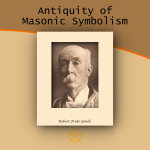 On the Antiquity of Masonic Symbolism Is the Symbolism of Masonry an inheritance derived from the old Masons who flourished before the era of the Grand Lodges (1717); or has it been borrowed from the Rosicrucians or others, after 1717? |
 Mason's Marks – from Egypt to Europe? Mason's marks have been a source of intrigue, not only to Freemasons but to historians and archaeologists. The use of simple pictograms have been employed for millennia by artisans to identify their work. But where did they originate and why? |
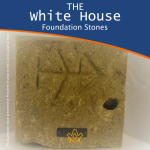 The White House Foundation Stones Further to the articles in our series on the history of the stone masons, we have a rather intriguing addition. During the 1950's renovation of the White House, President Truman retrieved more than 100 stone blocks with stonemasons marks. |
 What the Goose and Gridiron Tavern is in the ancient annals of London Freemasonry, The Green Dragon Tavern is to the memories of the Free-mason, of Boston and New England. |
 Auschwitz concentration camp: video photo article taken in 2013 |
 There are two things of importance happening this day - 27 January |
 Two approaches regarding the understanding of Freemasonry |
 Masonic Research in England c1930 An article which appeared in an American Masonic magazine, c1930 and which was reproduced in England, provoking a little controversy. |
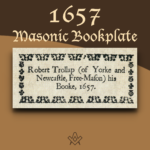 Masonic bookplates the ‘Brethren’s spiritual coats of arms and marks’ |
 The Unlawful Societies Act of 1799 Rebellious Freemasons and the 21st century |
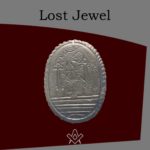 In 1912, Sarah Dowd of Dromore, Ireland, found a Masonic jewel dated 1517 - a date two hundred years before the establishment of Grand Lodge... |
 Freemasonry and Fascist Regime Interesting speech by the famous historian Prof. Aldo A. Mola, who links the fascist regime with the Masonic Associations. |
 Was famous Russian poet Alexander Pushkin a Freemason? And if so, was he a member of the lodge ‘for which all the lodges in Russia were destroyed’? |
 The Importance of Masonic Research Why is accurate - or authentic - Masonic research so important? The importance of making a daily advancement in Masonic knowledge is something that The Square is passionate about promoting. |
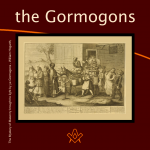 The Antient Noble Order of the Gormogons had a brief existence in the eighteenth century; they left few records or accomplishments, |
masonic knowledge
to be a better citizen of the world
share the square with two brothers

click image to open email app on mobile device
